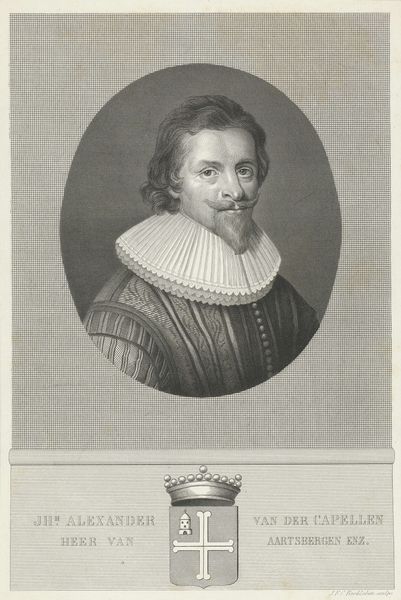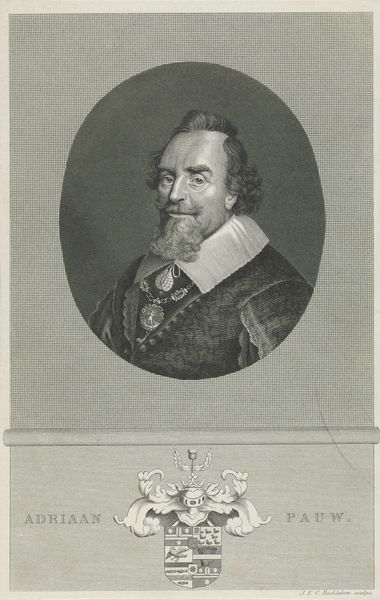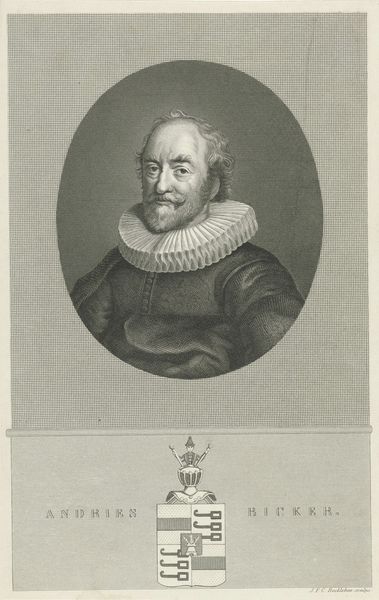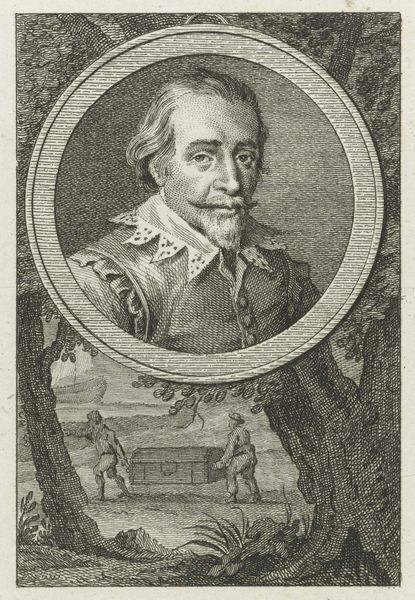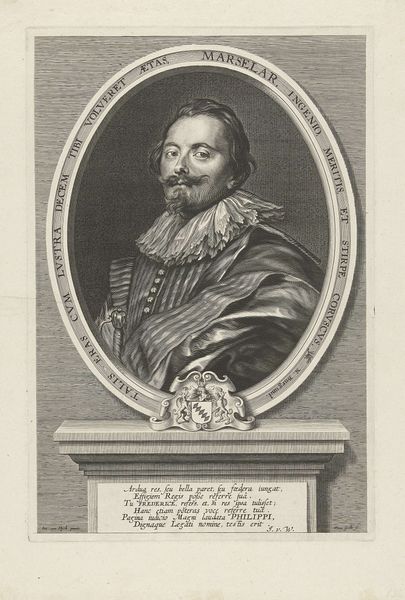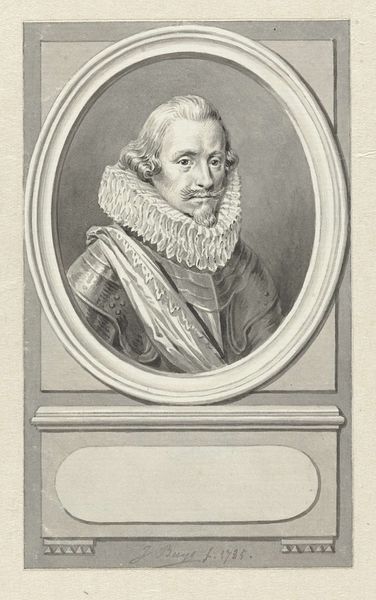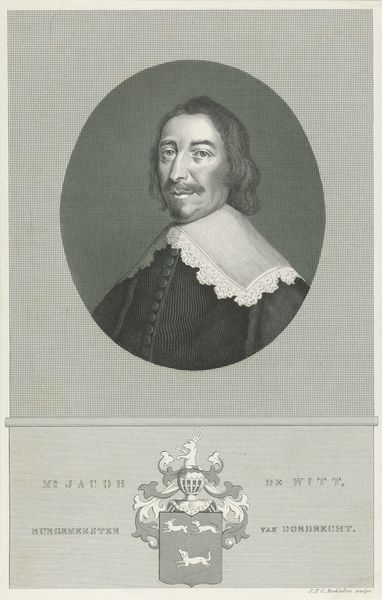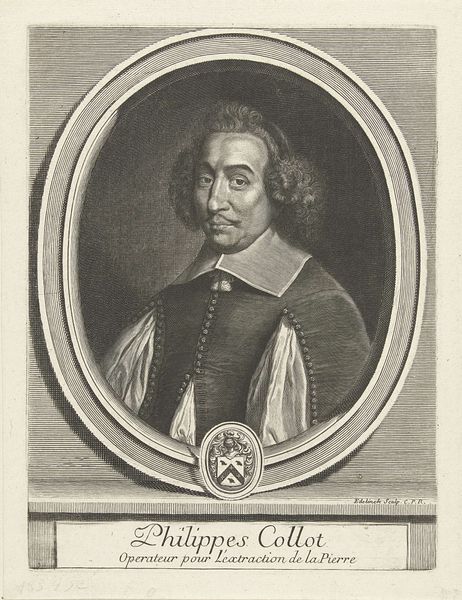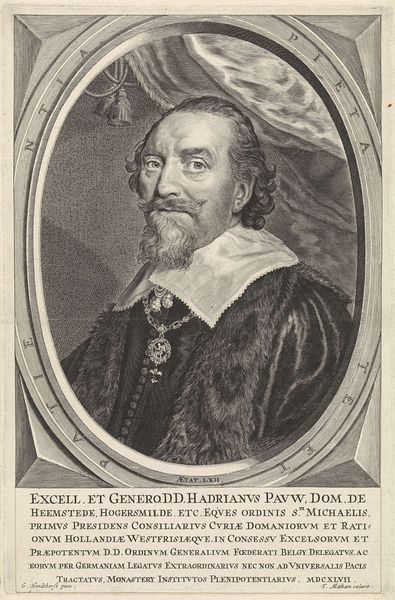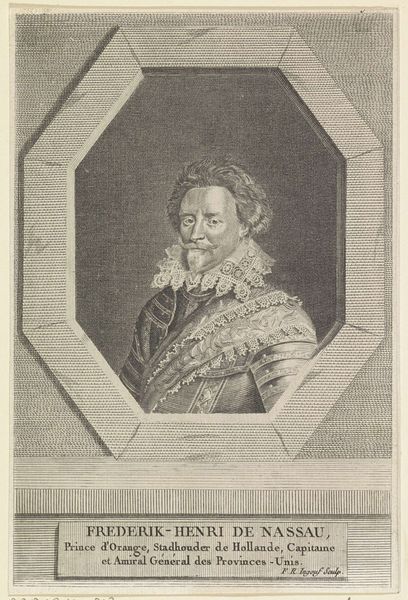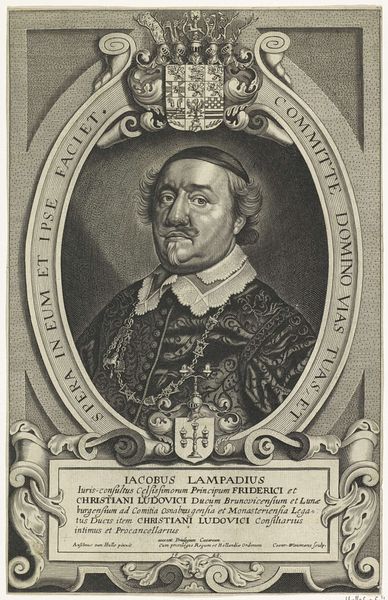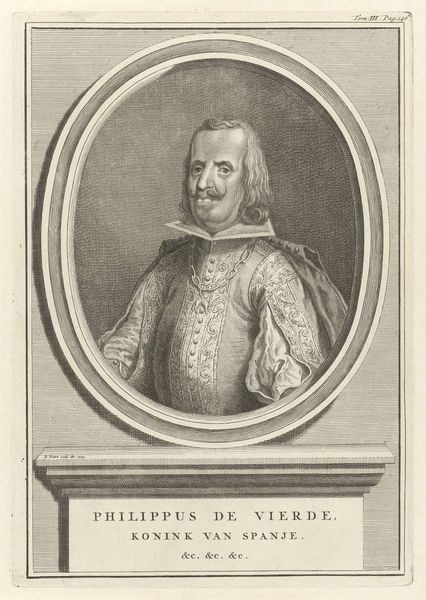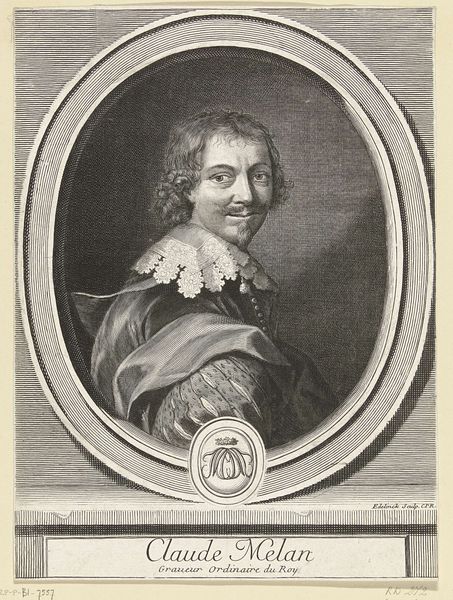
engraving
#
portrait
#
old engraving style
#
caricature
#
historical photography
#
history-painting
#
engraving
#
realism
Dimensions: height 225 mm, width 147 mm
Copyright: Rijks Museum: Open Domain
Curator: Here at the Rijksmuseum we have "Portret van Frans van Donia," an engraving created between 1866 and 1868 by Jan Frederik Christiaan Reckleben. Editor: It has an undeniably austere quality. The stippled background contrasts sharply with the subject's crisp depiction. Curator: This effect emerges from the painstaking nature of the engraving process itself. Note the fine lines and dots that form the image; they speak to hours of labor and the precise control the artist needed. The use of engraving as a medium in this era also emphasizes the rise of print culture, where portraits could be replicated and circulated widely, thereby shaping perceptions of historical figures. Editor: Right. And considering Donia’s coat of arms beneath the portrait, you get a strong sense of historical and societal standing. He isn't merely an individual; he's a representative of lineage, privilege, and inherited power—consider the symbolism implicit in crests such as these and the impact of aristocratic and bourgeois culture. Curator: Absolutely, the texture suggests high-quality paper, speaking to the materials used, and that reflects upon the craftsmanship and expense involved. This object wasn't simply 'made'; its making reinforces social hierarchies. Editor: It brings to mind questions around the politics of portraiture at the time, and I would say it acts as an endorsement of certain social values. Who commissioned it, and to what end? This isn't just about a person, but an idea of a person, preserved through artistic means, that upholds dominant class systems and patriarchal legacies. Curator: Thinking about how it was manufactured for a specific purpose, a reproduction used perhaps for promotional reasons? This kind of art serves purposes that stretch beyond pure aesthetics. Editor: Indeed. The portrait becomes a site of social contestation and negotiation. Ultimately, this is much more than just a static, historical image; it functions as a key to unlocking deeper discussions on culture, identity, and historical memory.
Comments
No comments
Be the first to comment and join the conversation on the ultimate creative platform.
